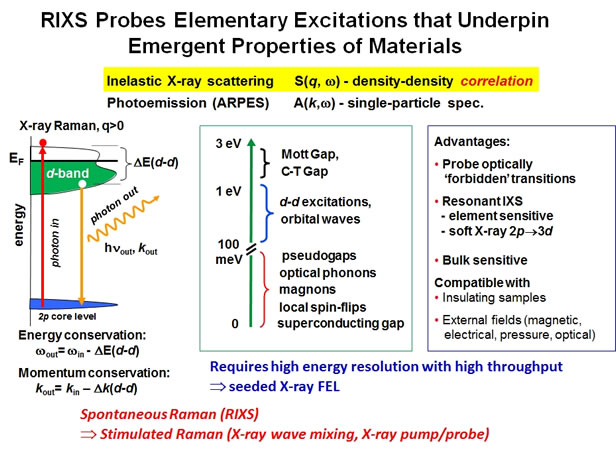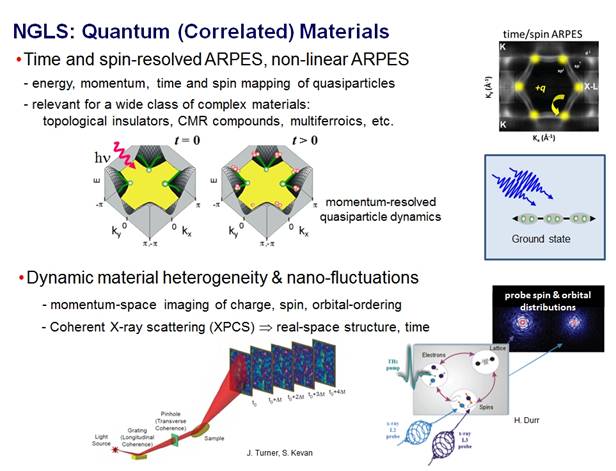Quantum Materials, Spin & Magnetization Dynamics at the Nanoscale
"Quantum materials" refers broadly to systems that cannot be adequately described by simple single-electron band-models. Such models and related theories provided foundational knowledge for the semiconductor revolution of the 20th century. Quantum materials are promising materials for the 21st century, for which we sorely lack an equivalent knowledge foundation. These materials include unconventional superconductors, multiferroics, topological insulators, colossal magnetoresistance compounds, and nano-structures where surface/interface effects and quantum confinement give rise to new physics, new properties, and important new functionalities.

NGLS X-ray lasers are anticipated to provide qualitatively new experimental capabilities to observe the energetically fragile many-electron dynamics of quantum materials. The high repetition rate and high peak brightness proposed for NGLS will enable new, nonlinear photoemission techniques that directly probe electron correlations. Moreover, the availability of ultrafast pulses will enable the observation of correlated states as they develop, and as they respond to specific excitations of the material. Multidimensional X-ray spectroscopy will provide the first comprehensive picture of many-body correlations and dynamics in quantum materials. Importantly, the availability of high repetition rate makes it practical to investigate these fragile states with moderate pulse energies (while maintaining high average power) in order to avoid disrupting the states being measured. Direct probes of charge correlations and their dynamics have been long-recognized as a critical capability gap of modern materials science. Bridging this gap requires the capabilities of NGLS X-ray lasers, and will propel the application of quantum materials in technology areas ranging from efficient energy transport, to low-power/high-speed information processing, to high-density information storage.

Similarly, NGLS will be indispensable to bridge critical gaps in our understanding of spin and magnetization dynamics via incisive probing of spin dynamics on the fundamental timescales of exchange interactions (1-100 fs) and spin-orbit coupling (~1 ps) in combination with element-specific nanoscale spatial resolution, and momentum and energy sensitivity. Unprecedented experimental capabilities enabled by NGLS, including time-resolved spin-polarized ARPES and X-ray two-color pump/probe, will provide unique insight into the fastest manipulation of spins by photons and will open a path to utilize pure spin currents in loss-free future electronic devices.

